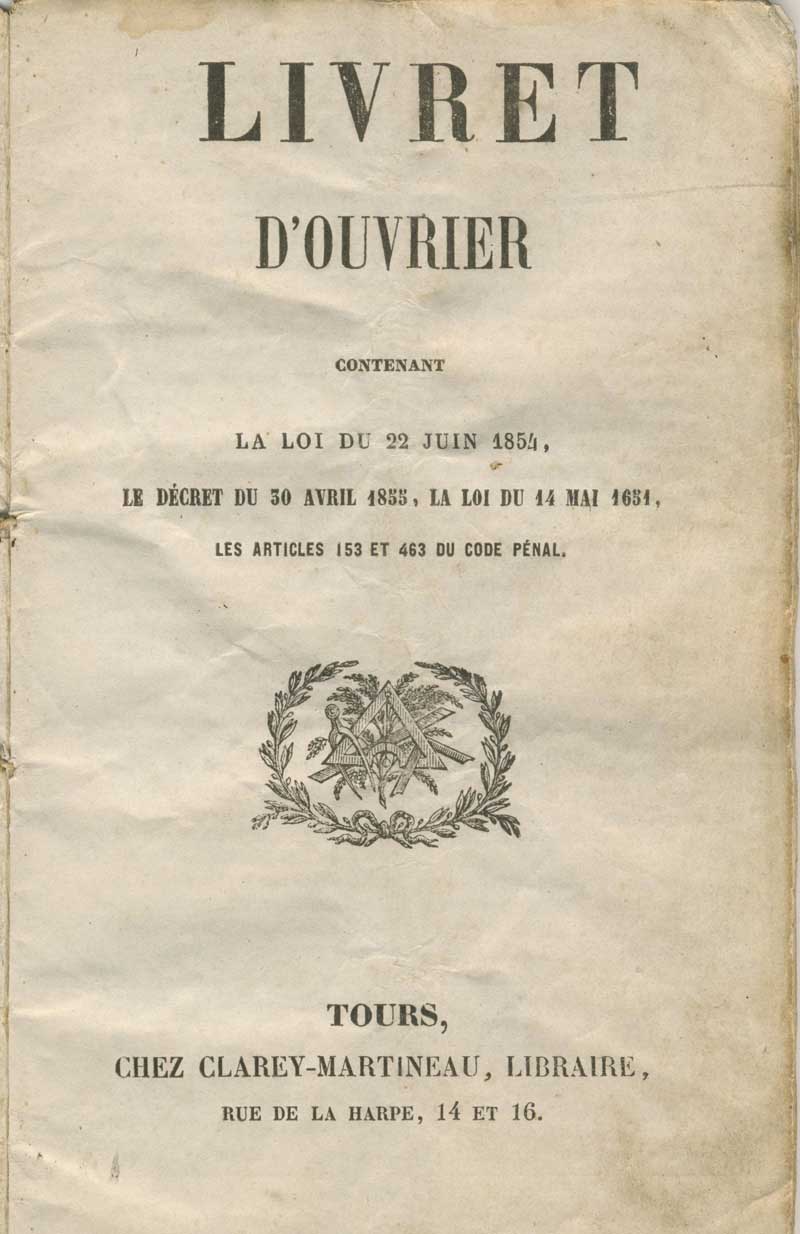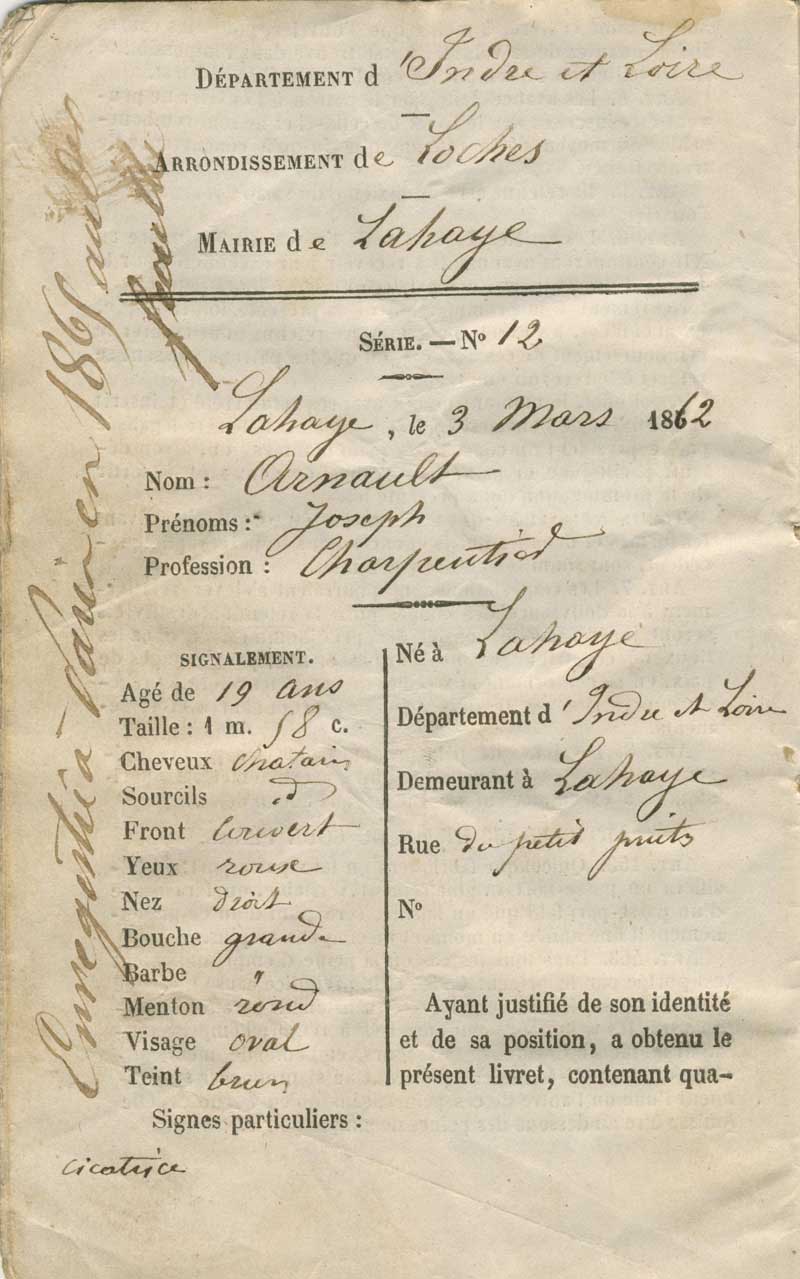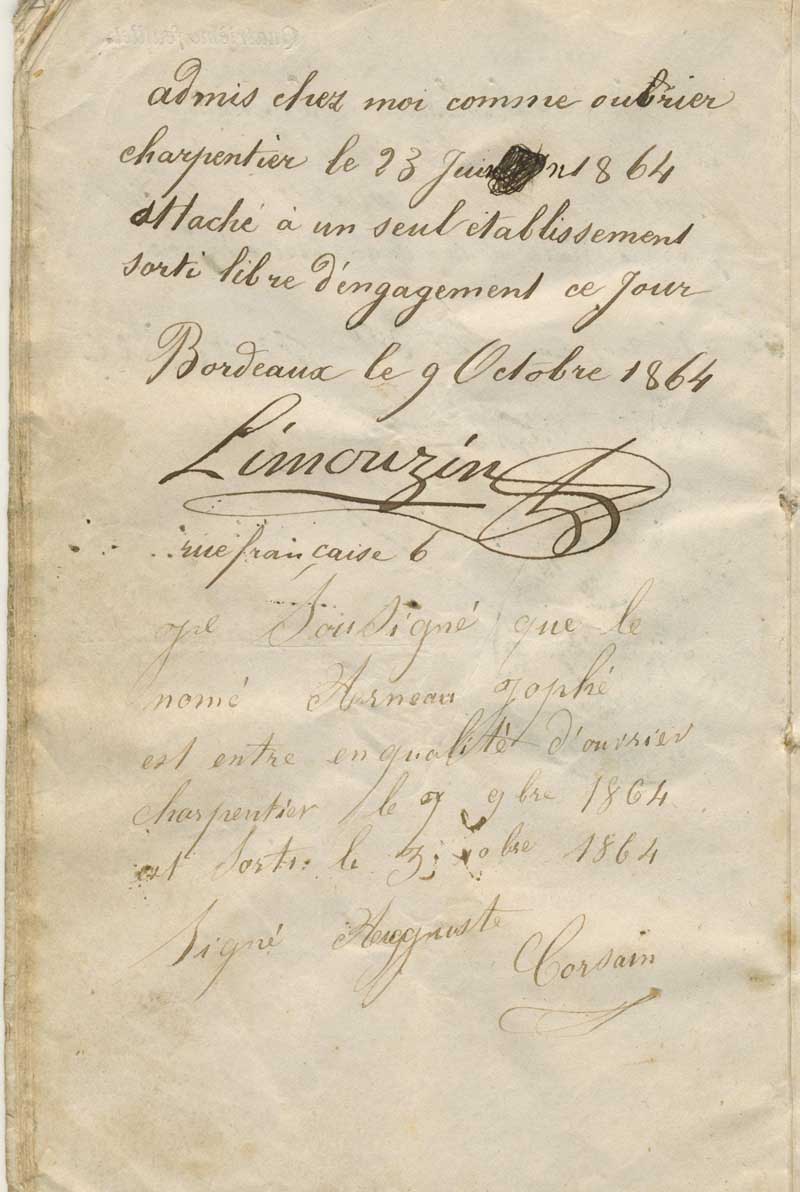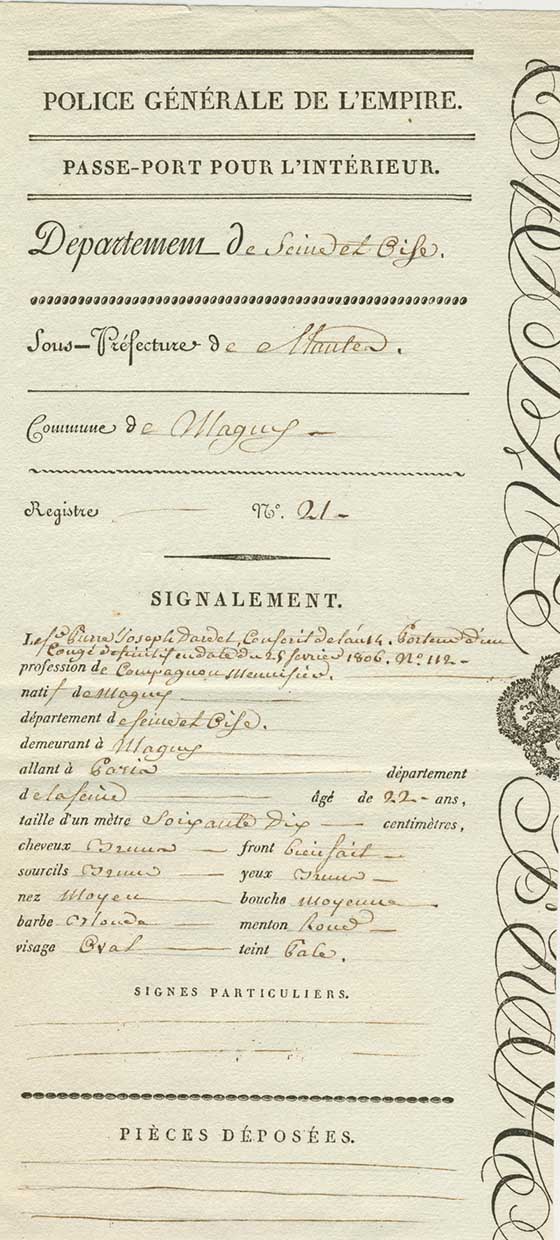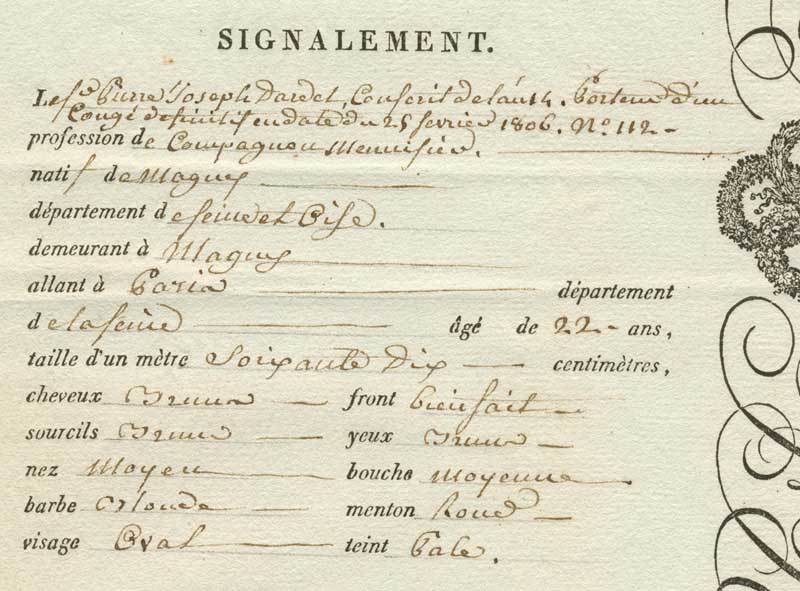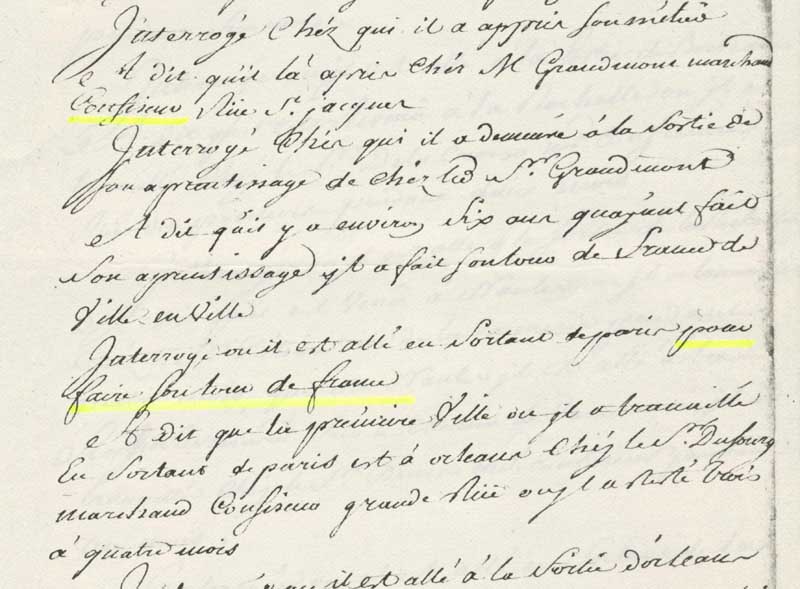Not all Journeys were a guild member' Tour de France
The situation becomes yet more complicated when it is discovered that a “companion” travelled and apparently completed his “Tour de France”. You have found letters from such a relative sent to his fiancée from various cities and, better yet, are in possession of his “worker’s booklet”. You are naturally inclined to assume this to be his “Companion’s booklet” since it mentions his successive employers and the route he took within a region or throughout the whole of France.
Caution is again advised: until the beginning of the 20th century, numerous workers of different trades (including non-guild workers) travelled around in their youth, to see the country after they had finished their apprenticeships. Many of them never joined a guild society. As far as the “worker’s booklet” is concerned, bear in mind that this was instituted in 1803 as a means of monitoring movement of workers, whether or not they were guild members and whether or not they travelled. This was an obligatory document which had to be stamped by the police commissioner or the mayor of each city visited, and in which the employer had to note the length of time a worker spent at his workshop.
Even if the document did not formally certify that its holder was a guild member, however, its importance is not to be ignored. Those that have come down to us have enabled confirmation of the itineraries of “Companions” identified as such from other sources. The fact that the holder worked in cities where Guild Centres existed greatly increases chances of confirming that he was indeed a “Companion” of the Tour de France. Although “worker’s booklets” were abolished in 1892, some were still in use up to the time between the two Wars as a form of supplementary work permit.
